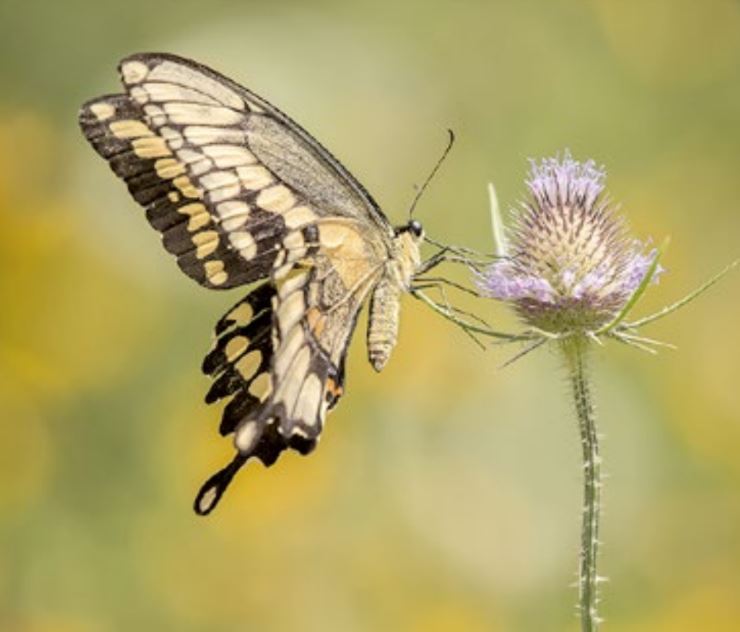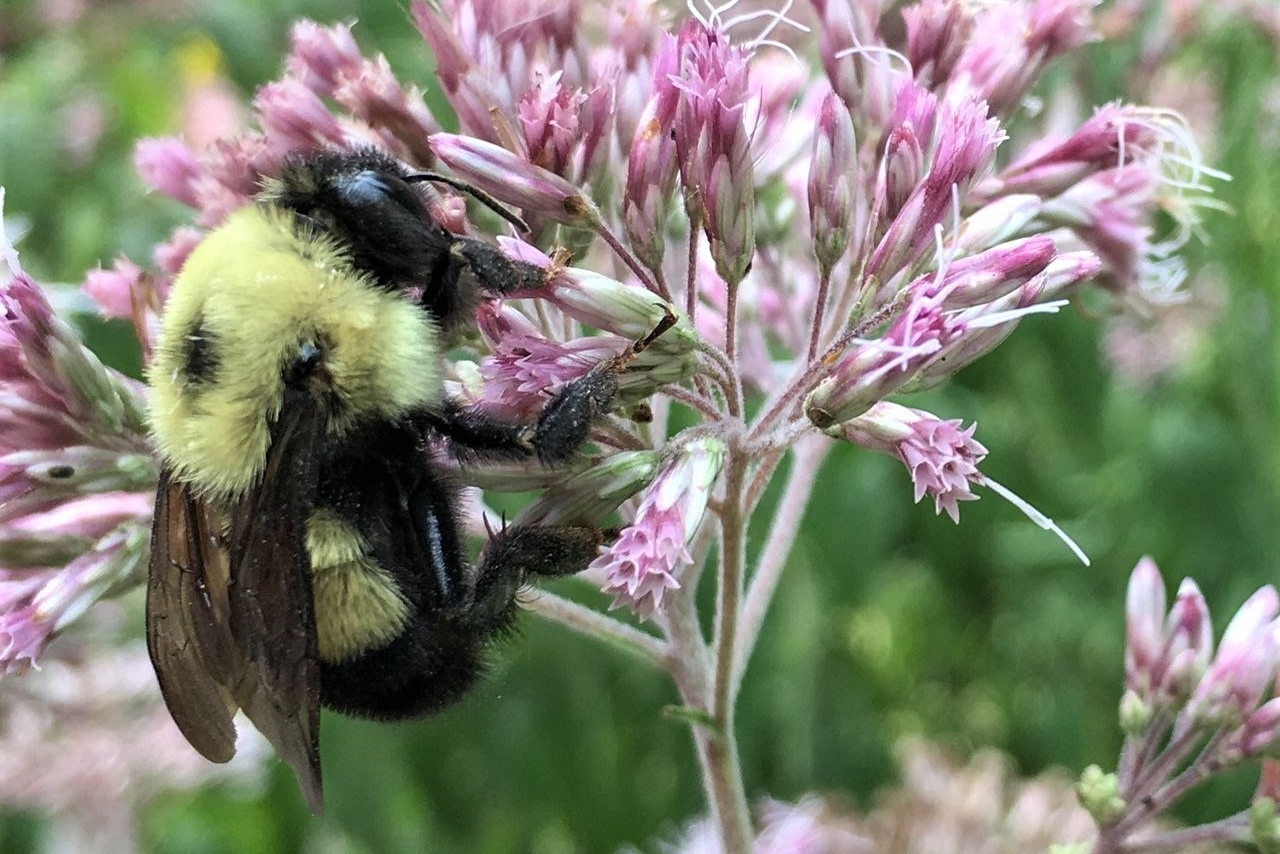The Harmful Effects of Mosquito Fogging
By Mary Ellen Gadski
In the past few years in Indianapolis, the number of companies promising to rid backyards of mosquitos has gone up dramatically. Their advertising yard signs have popped up all over my neighborhood. Last spring I experienced two door-to-door salesmen knocking on my door to give their pitch about how “family-friendly” their fogging is. Much to my distress, several of my closest neighbors signed up and had their yards repeatedly sprayed all summer long, sometimes as often as once a week. I have yet to meet anyone who wants to be bit by mosquitos, but do the people who fall for the sales pitch understand the many possible harmful effects of commercial fogging, to both the environment and their own health?
To start with the environmental effects, fogging with synthetic pyrethroids kills all insects, not just mosquitos. Pests are affected by pyrethroid applications, but so are predatory beneficial insects that may be susceptible at a lower dose than the pest, disrupting the predator/prey relationship. Butterflies, caterpillars, honey bees, fireflies, and even certain earthworms all are killed by the sprays. Pesticide applicators may claim that their pyrethroid fogging doesn’t harm bees, but it’s essentially for their marketing purposes.
Pyrethroids are moderately toxic to birds, but they are also indirectly affected because of the decrease in their food supply. Steve Holmer, Vice President for Policy at the American Bird Conservancy, stated in his email to me on this subject: “The impact of reduced food sources is a cause for bird declines.” Dr. Colin Purrington, professor of evolutionary biology at Swarthmore College from 1997 to 2011, explained that the population levels of swallows and flycatchers have dropped in the last several decades because there are fewer insects for them to eat. An article in Cornell Lab of Ornithology’s magazine reviewed studies of the diets of hummingbirds and concluded that small arthropods (spiders) comprise a high percentage of their food, especially for their nestlings. Pyrethroids also kill arthropods.
Insects perform essential ecological roles, starting with pollinating 90 percent of all flowering plants. In recent years, the importance of pollinators has come to the forefront of American consciousness since so much of our food production depends on them. But more than that, insects are the basis of the food chain that supports all life. As entomologist Dr. Douglas Tallamy of the University of Delaware has written: “We are winning the undeclared war against insects at our own peril.” At Newfields’ virtual horticultural symposium this past February, Tallamy sadly indicated that mosquito fogging companies were reversing all the good work he’s accomplished over the past 40 years in educating the public on the crucial role that insects play in nature.
If you want to know more about the health effects of synthetic pyrethroids, you might start with the chemicalWATCH factsheet produced by Beyond Pesticides of Washington, D.C. Its introduction asserts:
Pesticide products containing pyrethroids are often described by pest control operators and community mosquito management bureaus as “safe as chrysanthemum flowers.” While pyrethroids are a synthetic version of an extract from the chrysanthemum, they were chemically designed to be more toxic with longer breakdown times and are often formulated with synergists, increasing potency and compromising the human body’s ability to detoxify the pesticide.
The factsheet goes on to say that tests of some pyrethroids on laboratory animals reveal striking neurotoxicity when administered by injection or orally. The World Health Organization explains that synthetic pyrethroids are neuropoisons that act on the axons in the peripheral and central nervous systems. The EPA classifies some pyrethroids as possible human carcinogens. Many have been linked to disruptions of the endocrine system, which can adversely affect reproduction and sexual development, interfere with the immune system, and increase chances of breast cancer. A 2015 research paper in the journal Environmental Health found an association between exposure to pyrethroids and ADHD. The active ingredients and formulations used by the various fogging companies vary, so if you are concerned about your possible exposure, find out which chemicals they use and research the compounds individually.
If you want to control mosquitos in your yard, there are many alternatives to fogging. Dr. Purrington offers 10 practical suggestions, ranging from the ones we already know, like wearing long sleeves and pants when mosquitos are most active, to ones that came as a surprise to me, such as getting rid of those downspout extenders that pool stagnant water and provide breeding sites for mosquitos. The accompanying sidebar from Dr. Tallamy’s most recent book, Nature’s Best Hope, outlines an intriguing way to get rid of mosquitos the most effective way: in their larval stage, without killing all the other insects in our yards. This summer I will test this method when mosquitos are most bothersome (usually late summer). It seems such a simple, non-toxic solution.
I’m old enough to remember the windshield of my parents’ car being covered in squashed insects when we would take summer drives in the 1950s and 60s. With the global decline in insects since that time, we no longer have to scrub windshields of debris. That’s visual proof of how far insect populations have dropped since then. We need to examine the heedless ways we are contributing to that decline and keep in mind the words of eminent biologist E.O. Wilson:
“If all mankind were to disappear, the world would regenerate back to the rich state of equilibrium that existed ten thousand years ago. If insects were to vanish, the environment would collapse into chaos.”
Giant Swallowtail photo courtesy of Amy Hodson.

An Excerpt from Douglas W. Tallamy’s Book
Nature’s Best Hope: A New Approach to Conservation that Starts in Your Yard
(Timber Press, 2020), p. 210.
Contrary to what the fogger operator may have told you, the pyrethroid-based insecticides used by mosquito foggers indiscriminately kill all insects, not just mosquitos. Ironically, targeting adult mosquitos is the worst and by far the most expensive approach to mosquito control, because mosquitos are best controlled in the larval stage. Put a five-gallon bucket of water in a sunny place in your yard and add a handful of hay or straw. After a few days, the resulting brew is irresistible to gravid (egg-filled) female mosquitos. After the mosquitos have laid their eggs, add a commercially available mosquito dunk tablet that contains Bacillus thuringiensis (Bt), a natural larvicide, to your bucket. The eggs will hatch and the larvae will die. This way, you control mosquitos, and only mosquitos, without the use of harmful insecticides.

